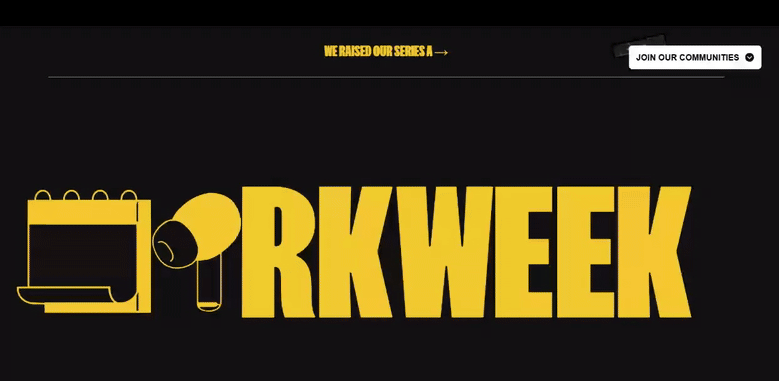- EmailBreakdown
- Posts
- 📌 Inside Workweek’s $1.1M email engine
📌 Inside Workweek’s $1.1M email engine
Clear, value-packed & curiosity-inducing


This week’s teardown is 🔥.
👀 Heads-up — this might be for you:
✉️ Ready to launch your newsletter?
Would you take a course with:
🎥 9 videos (all under 5 minutes)
📄 30+ templates + 5 AI prompts
🚀 A system to send your first issue in 10 days or less?
Right now, it’s yours for just $87.53 —
✅ And if you finish it and still feel stuck? Full refund. No catch.
Think about it:
You either launch your newsletter in 10 days…
Or get your money back and keep everything.
Total win-win.
Backstory
Workweek launched in 2021 with a simple premise: take real operators from niche industries, like:
and turn them into newsletter stars.
But this wasn’t just a media play.
Adam had one mission: build a house of high-trust brands that make more money off the email list than on it.
Instead of one giant publication, Workweek runs multiple newsletters, each led by an insider with lived experience. The model allows:
Hyper-personalization: Each vertical (e.g., health systems, HR, franchising) serves a distinct ICP
Higher monetization: $150 CPMs, $3K memberships, and vertical SaaS
Shared infrastructure: Ghostwriting tools, data systems, and ad ops across all brands
More verticals = more ways to monetize, more shots on goal, and more leverage.
What's in it for you?
Think “ad dollars = product signal”
Turn your niche into a profession-first brand
Adam’s best advice? Focus > more features, more offers, more anything
Email Delivery
Workweek’s newsletters boast <1% monthly churn after the 6-month mark.
This is the result of high-relevance, expert-driven content created by professionals for professionals.
Considering the email list size of dozens of thousands <1% is an unheard-of performance in the industry (the average churn rate in the industry)
Because each creator is their ICP, readers stick. As Adam says, “quality builds trust, and trust compounds.”
That’s why their LTV metrics and advertiser returns keep climbing.

All newsletters follow the same onboarding loop:
Signup → Content Fit Survey → Welcome Email.
This gives Workweek a pulse on subscriber intent from day one - helping creators craft relevant content and enabling ops to spot product-market fit before launching new offers.
One core belief behind this: quality content is how you earn permission to sell.

Content
Each newsletter is built around a professional persona
HR Director
Health System Strategist, etc.

Content is created by insiders, not journalists- meaning it’s lived experience, not analysis.
Style: informal, insight-rich, often shaped like Twitter threads
Recurrence: weekly send, sometimes multi-format (newsletter + podcast)
Voice: Human > corporate. “Press publish” is a core value
No editors, but they have a writing coach (ex-Hustle editor-in-chief) to support creators
No perfectionism: Mistakes are OK, clarity matters more

It’s also audience-first.
Each creator is their ICP, which means they naturally write in the tone, depth, and structure their audience expects- whether that’s a graph-heavy format for healthcare or casual memes in HR.
Growth
Workweek grew to 510K+ subs across 10 newsletters in under 3 years. Here’s the model:
Phase 1: Heavy paid ads (especially for first 6–9 months per vertical)
Phase 2: Double down on ICP once content-market fit is nailed
Phase 3: Build organic flywheel (events, shares, community)
They support creators on social, then layer in in-person events, dinners, and summits. Everything is tracked: they measure retention by cohort, ICP penetration (e.g., % directors and above), and the time from signup to conversion.
Adam hates recommendation platforms (here’s why)
One test showed a 30% increase in list size- but CPMs dropped 30%.
Wrong audience = lower ROI.
Key metrics from top performers:
510K cumulatively
10 newsletters
<1% churn monthly (after 6 months)
2–3x CTR for organic vs. rec-driven
60–70% of list in their ICP
Monetization
This is where Workweek shines:
Ad revenue: $1.1M/month at peak in 2024, with CPMs as high as $150 thanks to their B2B focus and top-tier sales team.
Memberships: $400–$3,000/year paid communities with high LTV and recurring intent

Vertical SaaS: Tools like Crockett (for franchises) serve specific industries

Events: 75+ in 2023 - small dinners, big summits
Recruiting services: Executive-level placements tied to industry expertise
Lead gen: Selling qualified leads to vendors
Every product starts small: a lead magnet → $10 guide → paid network. No big launches without signal.
Did you learn something new today? |
P.S. oh, and…
I hope you found value here.
If so, please forward this to 2 friends who might benefit as well - sign up here.
P.P.S.
Questions about newsletter growth, monetization, or other how-to topics?


Reply